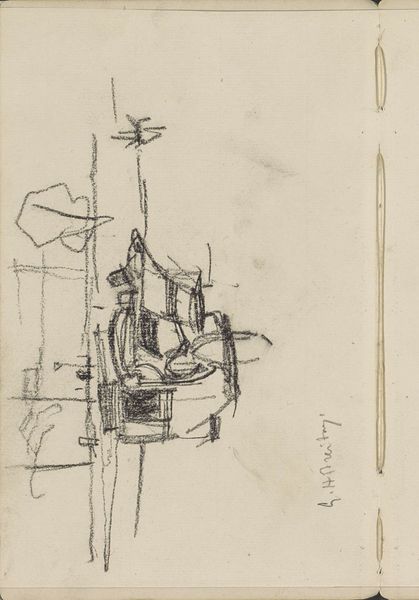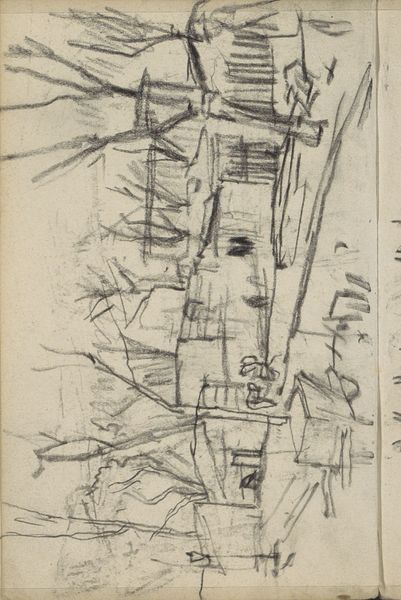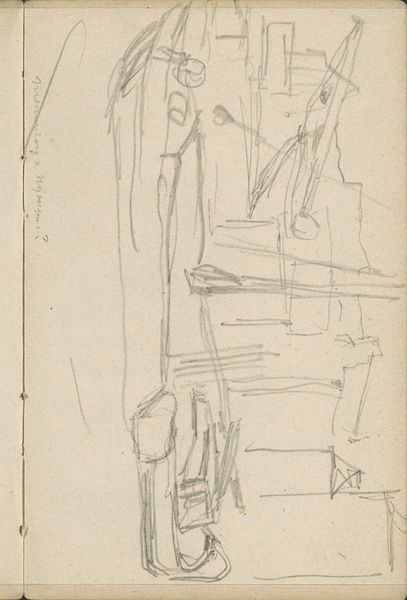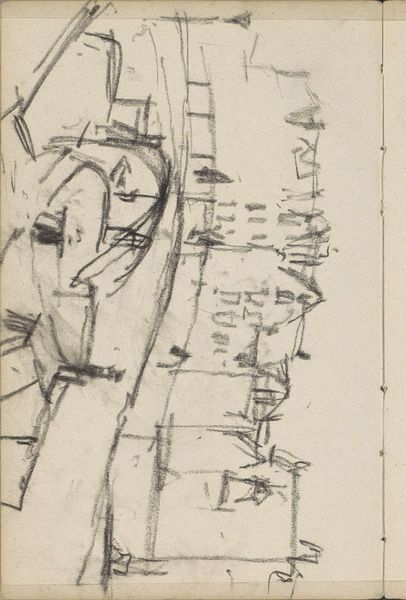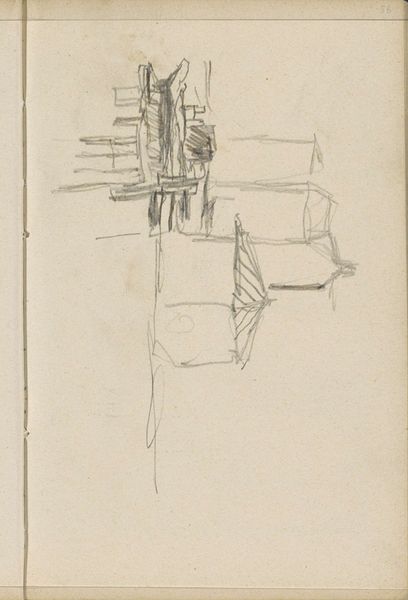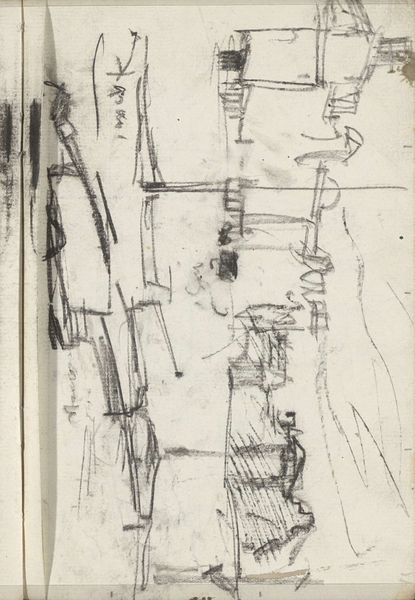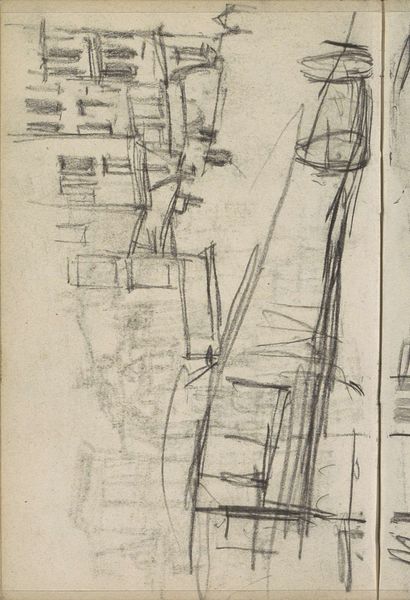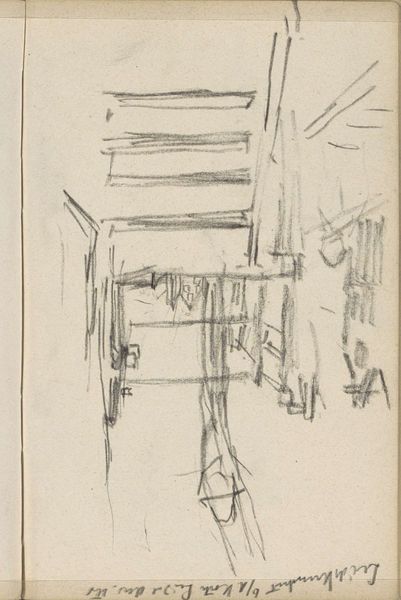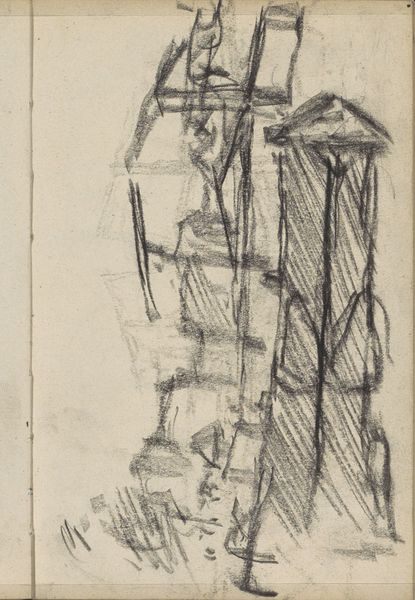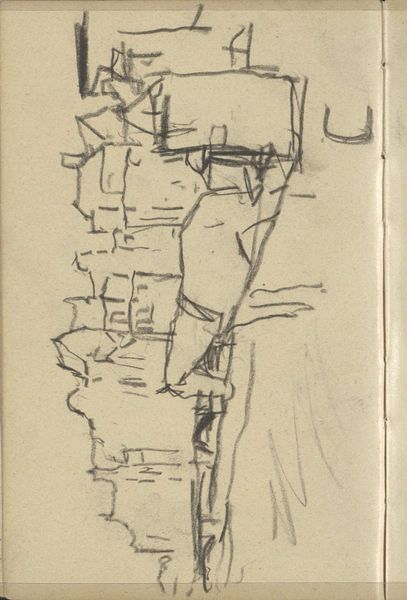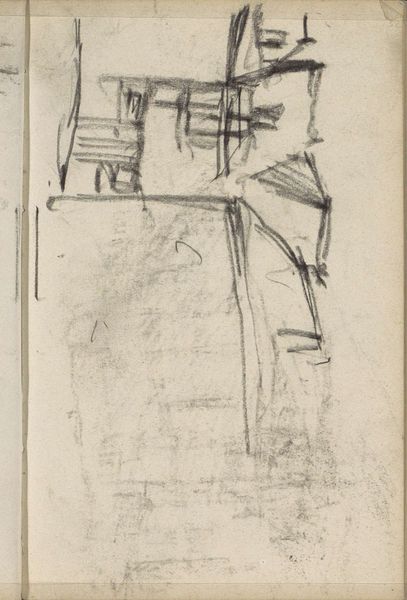
Copyright: Rijks Museum: Open Domain
Curator: Here we have "Aangemeerde boot," or "Moored Boat," a graphite drawing by George Hendrik Breitner, dating to around 1909, now residing here at the Rijksmuseum. Editor: It feels incredibly raw, almost unfinished, but that’s also what draws me in. The lines are so direct, capturing a fleeting moment, a mere suggestion of form, that feels inherently real, almost like peering into the artist's mind. Curator: Breitner, deeply immersed in urban life, especially in Amsterdam, chronicled the everyday experiences. He felt a deep sympathy for the working class, reflecting an era of immense social and political change. Breitner often used photography as source material. Editor: It makes sense. I can definitely see the quick capturing of light and shadow as you often do in a photograph. Is it because of that link that this resonates, or is it maybe something else? You mentioned sympathy for the working class. This drawing hints at a bustling port life; one of economic inequality and labor exploitation. Curator: Absolutely, and while the impressionistic style certainly leans into capturing the atmosphere, we need to look at the Dutch art market at the time, particularly the demand for cityscapes that depicted the modernization of Amsterdam. Artists were responding to these socio-economic developments, whether explicitly or implicitly. The act of sketching directly from life, “en plein air” as the French would call it, allowed artists like Breitner to engage intimately with the urban environment and, through exhibitions and distribution, to connect directly to those who had interest and money to invest. Editor: It’s an intriguing point – how capturing a slice of life also fits neatly within the machinery of commerce. Do you think that perhaps in focusing on the composition's raw immediacy, Breitner inadvertently glossed over the very realities he supposedly sympathized with, falling back into the established, comfortable status quo, and the wealthy expectations for what the public role of art should be? Curator: It's definitely a valid interpretation, that perhaps the formal elements overshadow social commentary, however, this scene would have served a visual connection between its wealthy patron, or purchaser and the reality of where their power stemmed from. Editor: Well, however ambivalent Breitner might have felt while rendering this drawing, it reminds us of the power that such historical artifacts hold. Not merely windows into the past, but rather also powerful prompts for challenging perspectives and asking questions. Curator: A brilliant way to summarize the intersection of the social climate, public role, and ultimately the long, lasting impact, that drawings such as this can create.
Comments
No comments
Be the first to comment and join the conversation on the ultimate creative platform.
